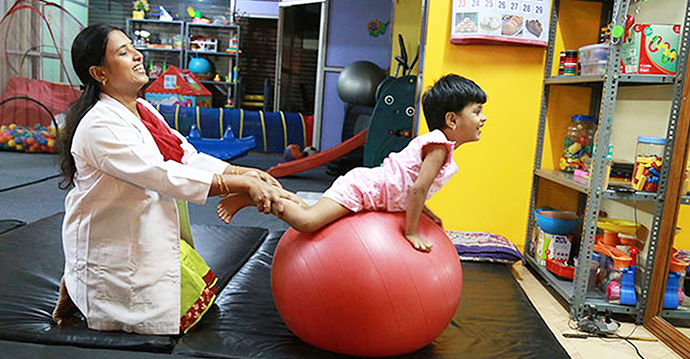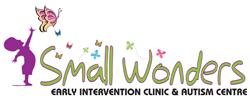Physiotherapy
Pediatric physiotherapy is used as a major method in the treatment of motor difficulties for children with ASD and ADHD. A pediatric physiotherapist will assess the child’s overall motor functioning, identify the underlying difficulties and plan for an intervention program to help address and overcome those difficulties and improve the child’s overall functioning.
Physiotherapy interventions which can be used to address the pediatric areas physical exercise methods, hydrotherapy, range of movement exercises, techniques and strategies etc.

Pediatric physiotherapy plays an integral role in comprehensive rehabilitation of children with;
- Jumping, hopping or skipping.
- Catching, throwing, kicking or dribbling a ball.
- Playing games or sports and keeping up with the peers.
- Sitting properly in a chair for long time without fidgeting.
- Learning new physical skills.
- Clumsiness or frequent falls.
- Poor postures.
Pediatric physiotherapists have specific skills required to assess, care and motivate children.
They work closely with all those involved in the developmental process of the child including
families, teachers, doctors and other health professionals.
Small wonders has a special advantage of providing MMSP (Manual Myofascial Stretching
Programme) for children who deal with the stretching of tight muscles and stimulating the
reciprocal muscles using manual techniques. This treatment completely deals with motor point
stimulation or stretching of specific muscles, which helps in relieving pain due to tightness in
spastic cases. Parents are educated so that they can continue the treatment at home after
regular therapy session.
Children will receive a one hour therapy session which may vary from a few weeks to months
depending on the severity of the problem. During the therapy sessions, parents will also be
educated about the condition, treatment and exercises for follow-ups at home and to ensure
effective results.
People with ASD have impaired Motor Skills, limited coordination and Posture Control. They also have difficulty in learning skills through imitation. Planning and completing certain movement skills are difficult for many children with Autism Disorders. These delays make it hard for them to form social skills.
Research shows that intervention programs, including Physical Therapy, can help children with Autism. These programs can help them reach their full potential. Pediatric Physical Therapists work with children from early child hood through school years.
When delays are noticed early a diagnosis can be made earlier. Early delays in your child’s movement may predict ASD. With the goal of increasing a child’s ability to engage in the daily routines that challenge them, Physical Therapists work with their families and care givers.
Physical Therapists work with your child to develop age appropriate movement skills. They use free and structured play to teach your child and help them to practice skills. PTS work on increasing the child’s strength and coordination. The treatment plan can include helping your child walk safely and efficiently or house to use stairs. They may work with your child to perform actions to songs. Physical Therapists guide you and your child on adding structure, routines and physical boundaries into their daily life. This guidance is designed to promote positive behaviors and help your child play normally.
Physical Therapists work with parents and teachers to increase their awareness with ASD. PTs use latest, most effective treatments to minimize your child’s challenges. Physical Therapists recommend changes to fit your child, support learning and teach movement skills. These may include:
PTs provide direct help when needed to improve a child’s ability to handle challenges. They work with the child to deal with school bus steps, crowded hallways, play ground and lunch room. PTs work with school teams to promote skills like listening, self-control and taking turns. They teach methods to teach your child to promote their ability to:

